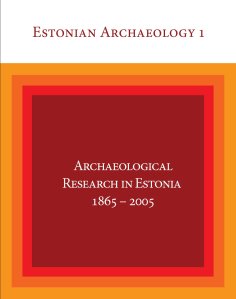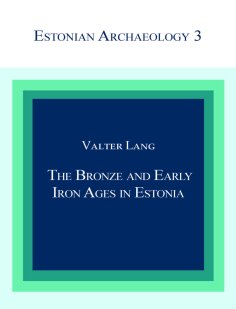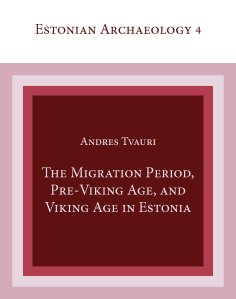Estonian Archaeology
Sarja toimetaja: Valter Lang
Toimetuskolleegium: Anders Andrén (Stockholmi Ülikool), Bernhard Hänsel (Berliini Vaba Ülikool), Volli Kalm (Tartu Ülikool), Aivar Kriiska (Tartu Ülikool), Mika Lavento (Helsinki Ülikool), Lembi Lõugas (Tallinna Ülikool), Heidi Luik (Tallinna Ülikool), Evgeni Nosov (Sankt Peterburgi Riiklik Ülikool), Jüri Peets (Tallinna Ülikool), Klavs Randsborg (Kopenhaageni Ülikool), Jussi-Pekka Taavitsainen (Turu Ülikool), Heiki Valk (Tartu Ülikool), Andrejs Vasks (Läti Ülikool), Vladas Žulkus (Klaipeda Ülikool)
ISSN 1736-3810
Sarjas ilmunud köited:

1. Valter Lang, Margot Laneman (toim.). Archaeological Research in Estonia 1865–2005, 2006. 388 lk. ISBN 978-9949-11-233-3.
This volume is dedicated to the historiography and analysis of the present state of Estonian archaeology. Part I (articles by Valter Lang and Marge Konsa) provides a review of the general development of archaeological research in Estonia from the 19th century to the beginning of the 21st century, focusing on institutional changes and advances in theoretical thinking and approaches. Part II includes articles by Aivar Kriiska, V. Lang, Andres Tvauri, Heiki Valk, Ain Mäesalu, Anton Pärn, Erki Russow and Arvi Haak on the previous research into the prehistoric and historical periods. In Part III, A. Tvauri and Mauri Kiudsoo discuss the formation and present situation of the archaeological and numismatic collections, and the establishment and development of archaeological heritage protection. Part IV discusses some more specific areas of research in Estonian archaeology, such as application of methods from the natural sciences in archaeology (A. Kriiska), settlement archaeology (V. Lang), underwater archaeology (Maili Roio), and connections between archaeology and oral tradition (H. Valk).
Avatud juurdepääs: OAPEN

Vol. 3. Valter Lang. The Bronze and Early Iron Ages in Estonia, 2007. 298 lk. ISBN 978-9949-11-726-0.
This book analyses social, economic, and cultural processes during the Bronze and Early Iron Ages (18th century BC – 5th century AD) in what is today Estonia. The above period between the Stone Age (ca. 9000–1800 BC) and the Middle Iron Age (AD 450–800) was an era of significant and crucial developmental processes. The final transition from a foraging to a farming economy occurred during that time and resulted in an extensive settlement shift from suitable hunting and fishing places to agricultural lands. In relation to the above processes, the general settlement pattern changed, and the agricultural household as the main settlement unit became prevalent. Social relations also changed, which contributed to the development of stratified societies, at first mainly in coastal Estonia and later throughout continental Estonia. Significant developments took place both in material and intellectual culture. By the end of the period the Estonian areas had changed beyond recognition compared to what they had been at the beginning of the period.
Avatud juurdepääs: OAPEN

Vol. 4. Andres Tvauri. The Migration Period, Pre-Viking Age, and Viking Age in Estonia, 2012. 384 lk. ISBN 978-9949-19-936-5.
This book analyses the society, economy, settlement, and culture of the territory of present-day Estonia in the period of ca AD 450–1050. This period is known in the Estonian archaeological chronology as the Migration Period, the Pre-Viking Age, and the Viking Age. This was an era of rapid change, by the end of which traditional Estonian peasant culture as it is known until the 19th century had developed. Whereas in Western Europe written sources from the second half of the first millennium AD herald the arrival of the Middle Ages, there is an almost complete absence of written information about the prevailing conditions and events that took place in the area of present-day Estonia. There are only remains of the farms and fortresses of that time beneath the earth, as well as cemeteries, overgrown field baulks and clearance cairns, and the large amount of excavated ancient objects or fragments thereof. Many aspects of prehistoric life cannot be researched because the source material is not extant and there is no hope of finding it. Moreover, many phenomena of human life do not generate archaeological source material. Thus our overall understanding of the Estonian Middle Iron Age and the Viking Age is inevitably fragmentary and superficial.
Avatud juurdepääs: OAPEN


